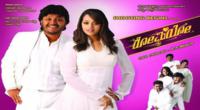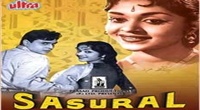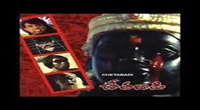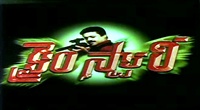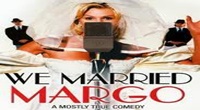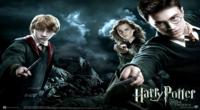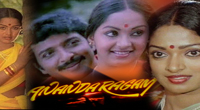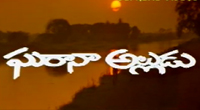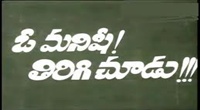The Killing is a 1956 film noir directed by Stanley Kubrick and produced by James B. Harris. It was written by Kubrick and Jim Thompson and based on the novel Clean Break by Lionel White. The drama stars Sterling Hayden, Coleen Gray, Vince Edwards and features Marie Windsor, Elisha Cook Jr., Jay C. Flippen and Timothy Carey.
| The Killing | |
|---|---|
Theatrical release poster | |
| Directed by | Stanley Kubrick |
| Produced by | James B. Harris |
| Screenplay by | Stanley Kubrick |
| Dialogue by | Jim Thompson |
| Based on | Clean Break by Lionel White |
| Starring |
|
| Narrated by | Art Gilmore |
| Music by | Gerald Fried |
| Cinematography | Lucien Ballard |
| Edited by | Betty Steinberg |
Production company | Harris-Kubrick Pictures Corporation |
| Distributed by | United Artists |
Release date |
|
Running time | 85 minutes |
| Country | United States |
| Language | English |
| Budget | $320,000 |
Screenplay
Johnny Clay (Sterling Hayden) is a veteran criminal planning one last heist before settling down and marrying Fay (Coleen Gray). He plans to steal $2 million from the money-counting room of a racetrack during a featured race. He assembles a team consisting of a corrupt cop (Ted de Corsia), a betting window teller (Elisha Cook Jr.) to gain access to the backroom, a sharpshooter (Timothy Carey) to shoot the favorite horse during the race to distract the crowd, a wrestler (Kola Kwariani) to provide another distraction by provoking a fight at the track bar, and a track bartender (Joe Sawyer).
George Peatty, the teller, tells his wife Sherry (Marie Windsor) about the impending robbery. Sherry is bitter at George for not delivering on the promises of wealth he once made her, so George hopes telling her about the robbery will placate and impress her. Sherry does not believe him at first but, after learning that the robbery is real, enlists her lover Val Cannon (Vince Edwards) to steal the money from George and his associates.
The heist is successful, although the sharpshooter is shot and killed by a security guard. The conspirators gather at the apartment where they are to meet Johnny and divide the money. Before Johnny arrives, Val appears and holds them up. A shootout ensues and a badly wounded George emerges as the only man standing. He goes home and shoots Sherry before collapsing.
Johnny, on his way to the apartment, sees George staggering in the street and knows that something is wrong. He buys the biggest suitcase he can find to put the money in (and struggles to lock it properly). At the airport Johnny and Fay are not allowed to take the case on their flight due to its size. Instead, they must check it as regular luggage. Johnny reluctantly complies. While waiting to board the plane the couple watch the suitcase fall off a baggage cart onto the runway, break open, and the loose banknotes scattered and then swept away by the backdraft from the aircraft's propellers.
Fay and Johnny try to leave the airport immediately, but they are unable to hail a cab before officers are alerted to them. Fay urges Johnny to flee; however, he refuses, calmly accepting the futility of trying to escape, and utters the final line, "What's the difference?". The film ends with two officers approaching to arrest him.
- Sterling Hayden as Johnny Clay
- Coleen Gray as Fay
- Vince Edwards as Val Cannon
- Jay C. Flippen as Marvin Unger
- Elisha Cook Jr. as George Peatty
- Marie Windsor as Sherry Peatty
- Ted de Corsia as Policeman Randy Kennan
- Joe Sawyer as Mike O'Reilly
- James Edwards as track parking attendant
- Timothy Carey as Nikki Arane
- Joe Turkel as Tiny
- Jay Adler as Leo the Loanshark
- Kola Kwariani as Maurice Oboukhoff
- Dorothy Adams as Mrs. Ruthie O'Reilly
| “ | I give Stanley a free hand to create, and he leaves the money problems to me. | ” |
| — James Harris | ||
| “ | We want to make good movies, and make them cheap. The two are not incompatible. | ” |
| — Stanley Kubrick | ||
While playing chess on Washington Square, Kubrick met producer James B. Harris, who was looking for a young new talent to produce for, having sold his film distribution company. Harris considered Kubrick to be "the most intelligent, most creative person ever come in contact with", and the two formed the Harris-Kubrick Pictures Corporation in 1955. Harris purchased the rights to Lionel White's novel Clean Break for $10,000, beating United Artists, which was interested in the film as a vehicle for Frank Sinatra. At Kubrick's suggestion they hired hardboiled fiction novelist Jim Thompson to write the script. United Artists told the pair that it would help finance the picture if Harris and Kubrick could find a high-profile actor to star. They signed Sterling Hayden, who agreed to accept $40,000. However, Hayden wasn't a big enough star for UA, which wound up providing only $200,000 for the film; Harris financed the rest using $80,000 of his own money and a $50,000 loan from his father. The film was the first of three on which Harris and Kubrick collaborated as producer and director in a span of less than ten years. Working titles for the film were Clean Break and Bed of Fear. It was the last feature film completely filmed by Kubrick in the United States—battle exteriors for Spartacus would be shot in Spain, but that film's interiors would be completed on Universal's Hollywood soundstages.
Three members of the cast—Hayden, Ted de Corsia and Timothy Carey—had appeared together the previous year in the low-budget noir film, Crime Wave. The art director, Ruth Sobotka, was Kubrick's wife at the time. Kubrick and Harris moved from New York to L.A. to shoot the picture, and Kubrick went unpaid during the shooting, surviving on loans from Harris. Aside from Hayden, with whom he had been impressed while shooting The Asphalt Jungle, Kubrick cast actors from film noirs he had liked, such as Timothy Carey, Ted de Corsia, Elisha Cook Jr. and Marie Windsor. The wrestler in the film was an old chess friend of Kubrick's, Kola Kwariana. The cinematographer's union in Hollywood told Kubrick that he could not, as had been planned, be both director and cinematographer, so veteran cinematographer Lucien Ballard was hired to shoot the picture. He and Kubrick clashed often during filming; on one occasion Kubrick favored a long tracking shot, with the camera close to the actors with a 25mm wide-angle lens to provide slight distortion of the image, but Ballard moved it further away and began using a 50mm lens. Kubrick sternly ordered him to put the camera back or he would be fired.
The film performed poorly at the box office, failing to secure a proper release across the United States, and it was only at the last minute that it was promoted as a second feature to Bandido! (1956), but failed to make money. However, it garnered critical acclaim, landing on several critical Top-Ten lists for the year. Time magazine wrongly predicted that it would "make a killing at the cash booths", asserting that Kubrick "has shown more audacity with dialogue and camera than Hollywood has seen since the obstreperous Orson Welles went riding out of town on an exhibitors' poll"—recording a loss of $130,000. A. H. Weiler, film critic for The New York Times, wrote, "Though The Killing is composed of familiar ingredients and it calls for fuller explanations, it evolves as a fairly diverting melodrama. ... Aficionados of the sport of kings will discover that Mr. Kubrick's cameras have captured some colorful shots of the ponies at Bay Meadows track. Other observers should find The Killing an engrossing little adventure."
Variety magazine liked the acting and wrote, "This story of a $2 million race track holdup and steps leading up to the robbery, occasionally told in a documentary style which at first tends to be somewhat confusing, soon settles into a tense and suspenseful vein which carries through to an unexpected and ironic windup ... Hayden socks over a restrained characterization, and Cook is a particular standout. Windsor is particularly good, as she digs the plan out of her husband and reveals it to her boyfriend." Although Kubrick and Harris had thought that the positive reception from critics had made their presence known in Hollywood, Max Youngstein of United Artists still considered them to be "Not far from the bottom" of the pool of new talent at the time, but Dore Schary of Metro-Goldwyn-Mayer was impressed with the film, and offered the duo $75,000 to write, direct and produce a film, which became Paths of Glory (1957).
Rotten Tomatoes rates it 97% fresh, based on 33 reviews compiled retrospectively. It has gained a cult following, among other works by Kubrick. For example, Eddie Muller placed the film at 15th among his top 25 favorite noir films, saying, "If you believe that a good script is a succession of great scenes, you can't do better than this. Hey, that scene was so good, let's do it again from somebody else's perspective".
In 1999 film critic Mike Emery wrote, "Kubrick's camerawork was well on the way to finding the fluid style of his later work, and the sparse, low-budget circumstances give the film a raw, urgent sort of look. As good as the story and direction are, though, the true strength of The Killing lies in the characters and characterizations." The same year director Peter Bogdanovich, writing for The New York Times, noted that while The Killing did not make money, it, along with Harris-Kubrick's second film Paths of Glory, established "Kubrick's reputation as a budding genius among critics and studio executives."
On January 9, 2012, Roger Ebert added The Killing to his list of "Great Movies." In his opening remarks, Ebert writes, "Stanley Kubrick considered The Killing (1956) to be his first mature feature, after a couple of short warm-ups. He was 28 when it was released, having already been an obsessed chess player, a photographer for Look magazine and a director of March of Time newsreels. It's tempting to search here for themes and a style he would return to in his later masterpieces, but few directors seemed so determined to make every one of his films an individual, free-standing work. Seeing it without his credit, would you guess it was by Kubrick? Would you connect Dr. Strangelove with Barry Lyndon?"
Influence
Quentin Tarantino has said that The Killing was a significant influence on his 1992 film, Reservoir Dogs.
Awards
Nominations
- BAFTA Film Award, Best Film from any Source, USA; 1957.
A digitally restored version of the film was released on DVD and Blu-ray by The Criterion Collection.
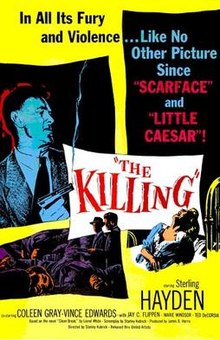 Story of movie The Killing Film :
Story of movie The Killing Film : 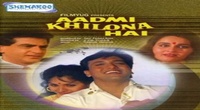
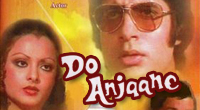
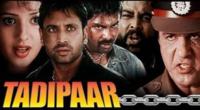
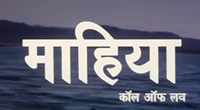
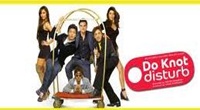
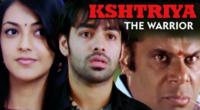
.jpg)
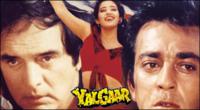
.jpg)
